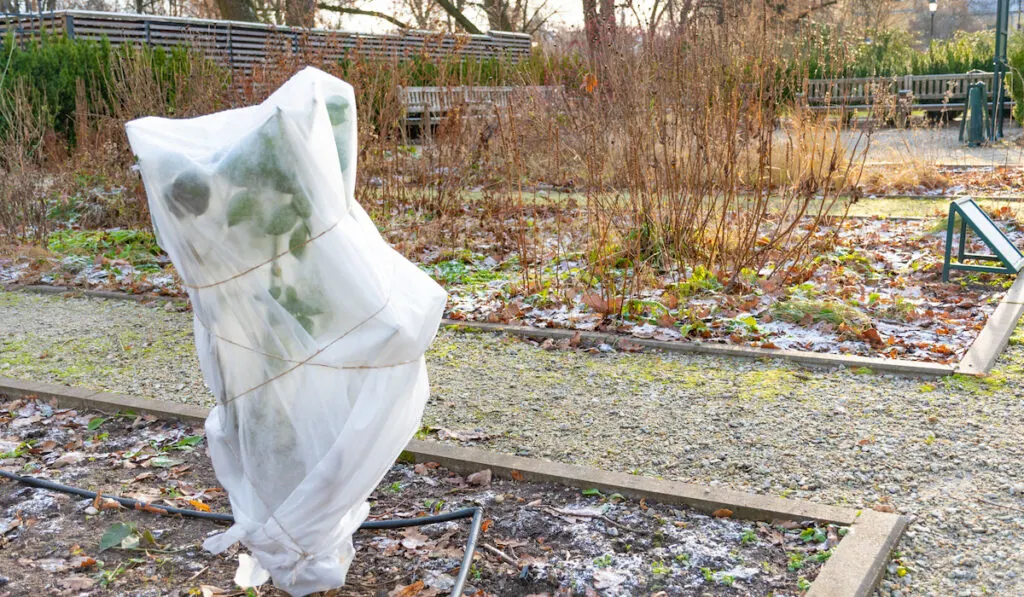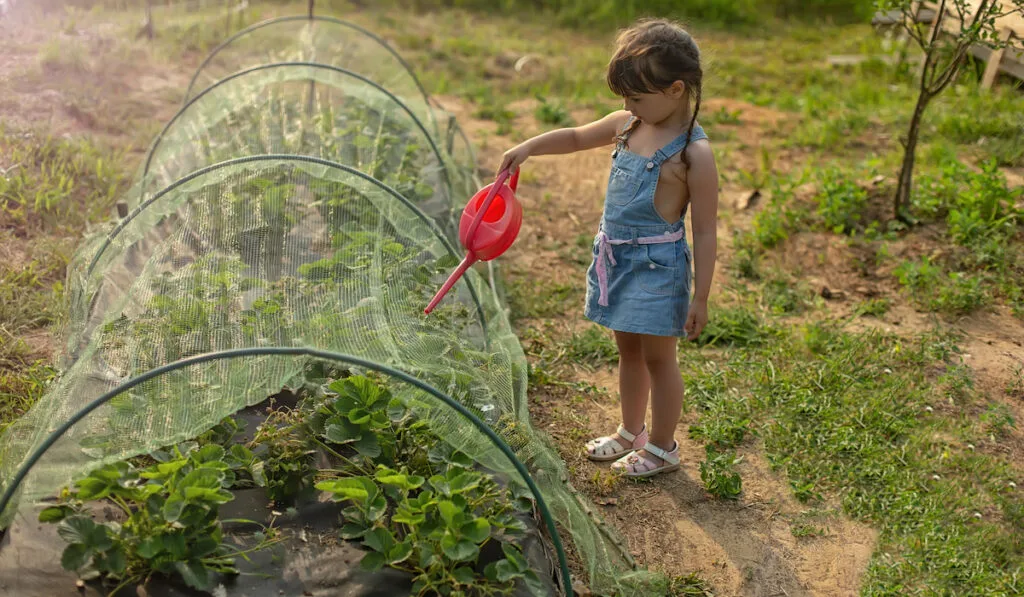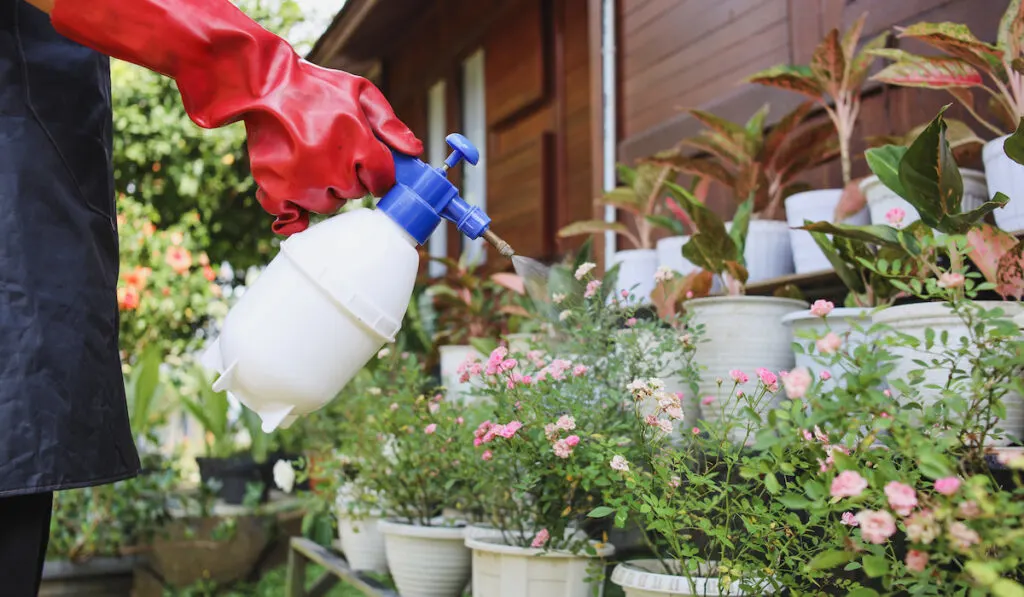While sunlight is essential for plant growth, not every plant can survive under the full glare of the sun. Shade-loving plants are such plants.
These plants won’t thrive under excessive sun exposure, as it leads to heat stress, wilting, and even sunburn. Therefore, providing a shaded environment for them is essential to ensure they thrive.
In this article, we’ll see some of the shade covers you can use to keep your shade-loving plants safe while ensuring they have all the sunlight they need for photosynthesis.
If you want to learn how to keep your plants safe, keep reading!

Table of Contents
What to Do Before Shading Your Plants
Before you set up shade in your garden, there are a few things you need to do.
These processes can’t be skipped, or there may be issues down the road. Think of the following steps as the keys to successfully shading your plants.
1. Assess the Light Requirements of the Plants
Doing this is important because it sets the basis for whether you’re going to set up full or partial shade, or both, depending on the plants you have.
Shade-loving plants have varying light requirements: Some may thrive in full shade; others may not.
Assess how much sunlight your plants need. Most shade plants need 3–6 hours of sunlight daily, sometimes even less.
Knowing how much sunlight your plants require can help you determine which shade pattern best suits them.
2. Observe Sun Patterns
Spend some time observing the sun patterns in your garden. Note the areas that receive more sunlight and those that are naturally shaded throughout the day.
You can also note how the sun moves over your property and the natural shadows that it casts.
Doing that will help you find the best spots to set up shade.

3. Plan Plant Placement
It is important to strategically organize how and where plants are planted in your garden.
For instance, randomly planting them anywhere in the garden might be placing shade-loving plants in the full glare of the hot sun.
If you carefully map out or plan the location/placement of your plants, you’ll be able to keep your shade lovers where they’ll receive just the right amount of light.
You can also create a planting plan that optimizes the available shade and sunlight in your garden.
4. Consider Weather Resistance

This is a significant factor in determining how and where to situate your plant shade, as well as the material that you’ll use as shade.
If you live in a region where there are strong winds or heavy rainfalls, you will definitely want to use sturdier materials and place them at points where they are not easily uprooted by the force of the wind or rain.
Take the time of the year into consideration. The shade requirements often vary with different seasons.
Considering the weather will ensure that you and your plants are well-prepared for the shading process.
Plant Shade Cover Ideas
Here are a few plant shade covers that you can use to protect your plants from the harsh rays of the sun:
1. Shade Cloth

A shade cloth is a meshed fabric specifically designed to provide shade by blocking some degree of sunlight.
Shade cloths are usually synthetic fabric, such as polyester or polyethylene, woven or knitted to form a mesh-like pattern.
Shade cloths vary in density, and the density determines how much shade or covering the cloth will provide.
Shade cloths are usually labeled in percentages—30%, 50%, 70%, etc.
A 30% shade cloth blocks 30% of sunlight, a 50% shade cloth blocks out 50%, etc.
Shade cloths are one of the best options available, and beyond their ability to screen sunlight, they also help to conserve moisture, prevent heat build-up, and ensure air circulation under the shade.
However, besides the commercially available shade cloths, you can also use the following as shade cloths:
- Bed sheets
- Old window blinds
- Old lattice
- Burlap
- Cheesecloth
2. Canopies and Sails

Canopies and sails are usually made from high-quality materials designed to block the sun’s rays. They are mostly used to achieve full shade.
They are available in different colors, sizes, and patterns to suit different tastes, allowing you to be creative with their customization.
Canopies and sails block out the UV rays of the sun and also help to maintain airflow.
3. Bamboo or Reed Screens
Bamboo or reed screens can also be used as plant shade cover.
Screens are easy to install and can give your garden a tropical ambiance.
They are made from bamboo or reed stalks woven together to form a barrier that partially blocks screens sunlight.
4. Arbors and Trellises

If you have arbors in your garden, they can be put to good use. They are not merely decorative or architectural.
Training plants like grapevines, clematis, or passion flowers to climb the arbors can help create shade for the plants beneath them.
You can also build a trellis and train your plants to climb them to achieve the same results.
5. Cheesecloth and Burlap

Cheesecloth and burlap are examples of natural materials you can use as shade covers if you prefer eco-friendly options.
They are similar to the shade cloth and are often woven in the same mesh-like pattern. They also provide partial shade and allow air circulation.
The only downside to using them is that the materials they are made from do not hold up well against harsh weather and, as such, don’t last as long as other synthetic options.
How Do You Create Temporary Shade for Plants?
Temporary shades are often used for nursery beds or set up during certain seasons, like summer, when it gets hot.
Here are some of the temporary shade options you can consider:
1. Umbrellas
Umbrellas are primarily designed for outdoor use and can be adapted to provide temporary plant shade in your garden.
You can easily move them or adjust their placement to meet changing shade requirements.
2. Shade Netting

Shade nets are one of the readily available options for creating temporary shade. They allow for airflow and temperature regulation while reducing direct sunlight to the plants.
To set up shade netting:
- Erect poles or stakes around the area to be covered.
- Cut the available net to your desired size.
- Drape the netting over the erected poles or stakes.
- Adjust the height and tension of the netting to achieve your desired shade intensity.
3. Shade Frames
You can construct PVC pipes or metal poles and attach a cloth to them as an inexpensive way to create a temporary shade.
The frames can be easily assembled or disassembled per your needs.
4. Potted Plants

If you have movable, potted sun-loving plants, you may use them as a temporary shade or sunblock for your shade-loving ones.
By placing them strategically at different locations or heights, you’ll be able to provide a temporary shade solution.
How Do You Protect Shade Plants From the Sun?
1. Location Planning
Taking deliberate steps to place your plants in naturally shaded environments can help reduce the stress of setting up shades.
You can place your shade lovers near tall structures that cast shadows, like trees, or north-facing walls.
Choosing a shady location will minimize their exposure to sunlight and create a more favorable environment for them to thrive—at no cost to you.
2. Mulching
This is a fairly common process involving covering the ground around your plants to naturally conserve moisture and essential soil nutrients that can be lost through evaporation.
Mulching materials you can use include sawdust and wood shavings. You can also use low-growing plants to help cover the ground.
The idea is to retain as much moisture as possible and regulate soil temperature, which is essential for shade plants, as they often prefer moist soil conditions.
3. Regular Watering

Shade plants have more shallow roots than sun-loving plants, and, as such, they require frequent watering compared to other plants in the full sun.
You have to monitor the moisture level of the sun around them and ensure they get enough water so they don’t wilt or get sunburned.
4. Implement Shade Structures
Consider incorporating permanent shade structures into your garden layout.
You can set up canopies, shade cloths, or use trellises with climbing plants to create shade while beautifying your garden space.
5. Provide Ventilation

It’s easy to get carried away with blocking sunlight that one forgets that stale or stagnant air under the shade can also be harmful to the plants.
To prevent this, ensure the shade is well positioned far above the plants for optimal air circulation. Also, ensure that you avoid overcrowding the plans.
Final Thoughts
Protecting shade-loving plants from excessive sunlight is essential for their well-being.
With the variety of shade covers available, it’s easier than ever to protect them and provide a suitable environment for them to thrive.
Whether you opt for the traditional shade cloth or other innovative options like trellises or canopies, the key is providing the right degree of shade while promoting airflow and watering practices.
By implementing the practices covered in this article, you can ensure that your shade-loving plants thrive in their protected space.
Remember to consider the needs of your plants and adjust the measure you take accordingly.
Happy gardening!
Resources
- https://www.gardeningknowhow.com/garden-how-to/info/shade-cover-tips.htm
- https://balconyboss.com/garden/shade-for-plants/
- https://whyfarmit.com/shading-for-plants/
- https://growinginthegarden.com/how-to-create-shade-in-the-garden/
- https://www.idigorganics.com/garden/vegetable-garden-shade-ideas.html
- https://squarefootgardening.org/2021/07/shade-cloth-2
